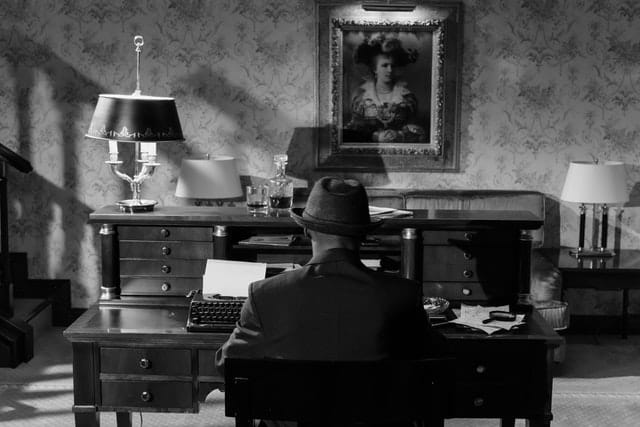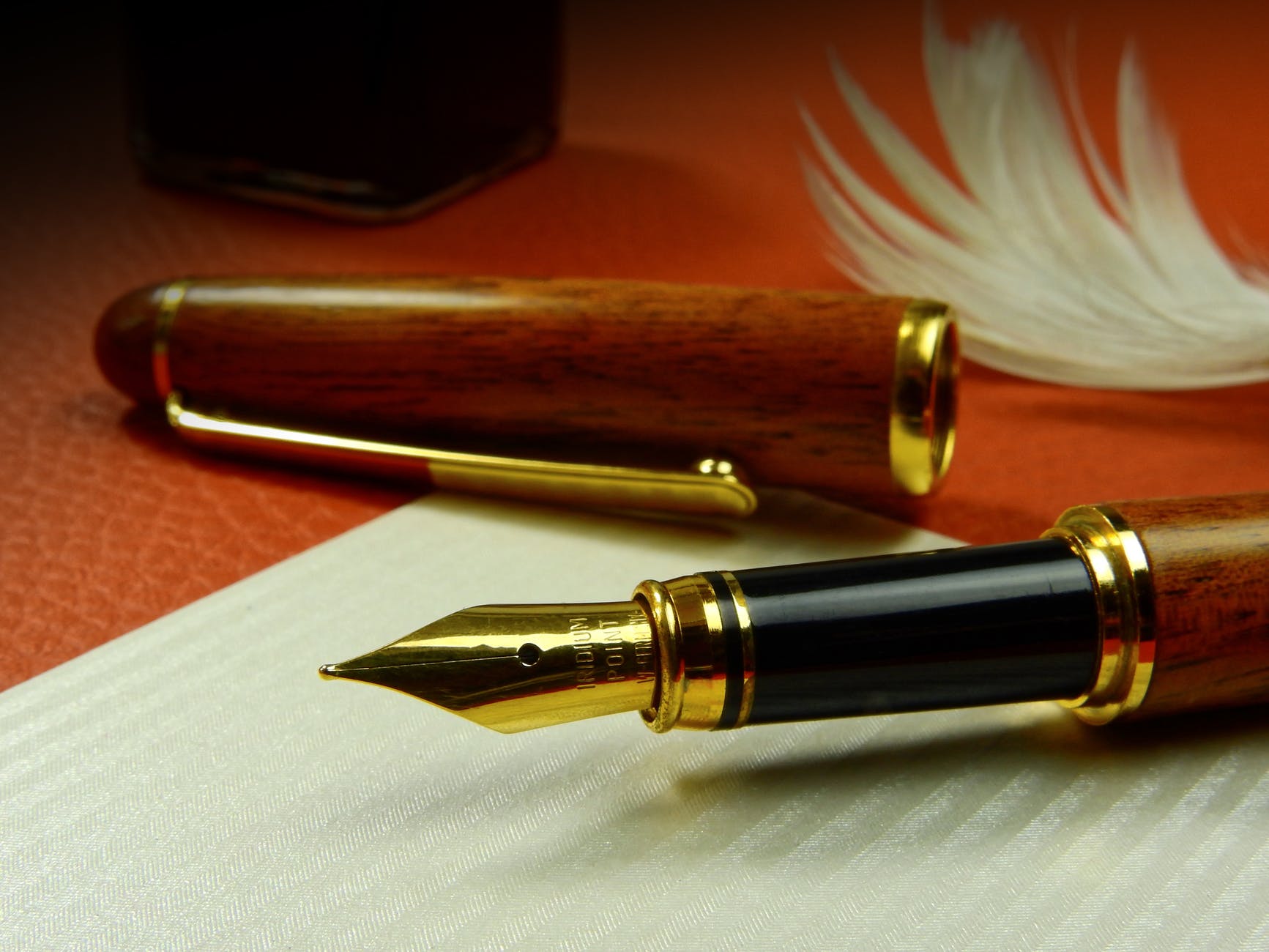When you think of a writer, what image comes to mind? An eccentric hermit who locks themselves up in a remote cabin, stays up all night writing, and drinks far too much alcohol?
Like most stereotypes, these are not generally an accurate depiction of reality. In fact, most clichés about writers couldn’t be further from the truth.
In this fun blog from Authors Publish, they address 14 common myths about writers, and debunk them with a dose of reality.
With some of these myths, it’s pretty easy to see where they came from. For example, the myth about writers being independently wealthy (or have a rich spouse who is supporting them). After all, how could someone possibly have a day job and still have time to write?!?
Or how about the myth that writers are eccentric and have weird habits or obsessions? After all, even we can admit we’re an unusual bunch.

Other myths, though, such as all writers having a muse, living as hermits, or being alcoholics don’t seem to have any real basis behind them.

The Bizarre Writing Habits of Famous Authors
For even the most skilled writers, it takes a special kind of motivation to turn out literary hits. While some writers may rely on a good cup of coffee, and perhaps some inspirational music, there are others who take a less conventional approach to finding motivation.
Take Benjamin Franklin, for example. He felt that his best work was done if he wrote while he was nude. He didn’t stop there, though. He was also known to frequently write while soaking in a bathtub. In fact, Franklin was credited with bringing the very first bathtub to the United States in the 1780s.
Of course, many classic writers were known to have used alcohol or drugs to put them in the “correct” mind frame (Coleridge was known to openly indulge in two grains of opium before starting his work each day).
It seems that many writers find that their body positions can make or break their ability to write for the day. Writers such as Hemingway, Charles Dickens, Virginia Woolf, Lewis Carroll, and Philip Roth have all said that they did their best writing while standing up. However, others such as Mark Twain, George Orwell, Edith Wharton, Woody Allen, and Marcel Proust were known for churning out pages while laying down.
Other writers, such as Dame Edith Sitwell, found inspiration in darker places. According to this interesting blog from Delancey Place, every morning Sitwell would lie in an open coffin for a while before beginning her day’s writing.
And while some famous writers do still turn to coffee to get them through the day, few come close to the insane amount of caffeine that was consumed by Balzac. It is said that he drank more than 50 cups of coffee a day and actually ended up dying from caffeine poisoning.
So, next time you are finding yourself struggling to find motivation, perhaps you should consider trying one of these bizarre methods. Just be sure to let us know how it turns out!
Pen Names and The Famous Writers Who Use Them
If you have ever read a book and found yourself thinking that the style and way of writing seemed very familiar, it is possible that the book you are reading was actually written by your favorite author —only under a pen name.
A pen name, also known as a nom de plume or a pseudonym, is an assumed name used by an author, in place of their own name.
Some authors write exclusively under their pen name, while others write under both their actual name and their pen name (or multiple pen names, in some cases).
But, why do authors use pen names? And how do they come up with the pen names they use?
While the answer for that varies from author to author, we have come up with a list of 8 famous authors who have used pen names, and the reasons behind their decision to forgo their real names on their books.
Mark Twain (real name Samuel Clemens):
It is a well-known fact that Mark Twain’s real name was Samuel Langhorne Clemens. It is said that Clemens got the name “Mark Twain” from his former job as a riverboat captain. The term, “Mark Twain”, is a river term that means “two fathoms,” or 12 feet. The sounding of “Mark Twain” on a riverboat meant that it was safe to navigate the water.

What is not so well known is the fact that Clemens also wrote under the names Thomas Jefferson Snodgrass, Sergeant Fathom, and W. Epaminondas Adrastus Blab.
It is said that Samuel Clemens chose to write under pen names as a way to have literary freedom.
It was also a way to protect his family from repercussions due to the content and opinions of the characters in his books.
Dr. Seuss (real name Theodor Seuss Geisel):
Theodor Seuss Geisel is famous worldwide for his children’s books, penned under the name “Dr. Seuss.”
Geisel first started using this pen name in college, after he was caught drinking by the Dean of the school, stripped of his position as editor of the Dartmouth college’s humor magazine, “Jack-o-Lantern,” and banned from writing for the magazine.
In order to trick the administration and continue writing for the magazine, Geisel adopted the name Dr. Theophrastus Seuss, which he later shortened to Dr. Seuss.
Geisel was not actually a doctor of any sort, having dropped out of the PhD program at Oxford.
The “Dr.” in his pen name was in honor of his father, who had hoped that Geisel would someday get his PhD. The “Seuss” came from Geisel’s middle name, which was also his mother’s maiden name.
While not nearly as famous as his “Dr. Seuss” pen name, Geisel also famously wrote under the names Theo LeSieg (Geisel spelled backwards) and Rosetta Stone.
George Orwell (real name Eric Arthur Blair):
When author Eric Arthur Blair was ready to publish his first book, Down and Out in Paris and London, he was concerned that his family would be embarrassed by the stories of their time in poverty.
In order to protect them, he decided to adopt a pen name.
He chose the name George Orwell to reflect his deep love of England.
George is the patron saint of England, and Orwell was the name of a river where he loved to go sailing.

Lemony Snicket (real name Daniel Handler):
It is likely that most people cannot identify any books written by Daniel Handler.
However, one would be hard-pressed to find someone who has never heard of Lemony Snicket and his popular children’s series’ A Series of Unfortunate Events and All the Wrong Questions.
It is said that Handler first adopted the pen name of Lemony Snicket when he was doing research for his first novel, Basic Eight. He needed to contact various right-wing organizations, but did not want them to have his real name. Thus, Lemony Snicket was born.
Stan Lee (real name Stanley Martin Lieber):
Debatably one of the most famous comic book writers in the world, Lieber originally made the decision to write under the name Stan Lee because he hoped to one day graduate to writing more serious literary work, and planned to save his real name for that.
Once it became apparent that he was destined to be known for his comic books, Lieber made the decision to legally change his name to Stan Lee.
Richard Bachman (real name Stephen King):
When King first started his writing career, it was a common belief in the publishing world that an author could only successfully release one book per year. In order to bypass this belief, King created the pseudonym “Richard Bachman,” so that he could release multiple books per year.

King ended up publishing seven novels under the name of Bachman, before the connection between his pen name and his real identity were discovered.
While King claims that he created his pen name in order to get away with releasing more books per year, it is said that he also wanted to see if “lightening could strike twice.”
He wondered if his writing talent alone could launch his Richard Bachman personality into as much fame as he had achieved under his own name.
Interestingly, though, the books he released under the name Richard Bachman did not gain success until it was publicly known that the books were King’s.
JK Rowling and Robert Galbraith (real name Joanne Rowling):
Now famous worldwide for her Harry Potter series, Rowling’s publishers were at first unsure if her target audience of pre-teen boys would accept stories about wizards that were written by a woman. For that reason, they encouraged her to use initials on the books instead of her first name.
Having no middle name, Rowling adopted the “K” from her grandmother’s name, Kathleen, and became known as J.K. Rowling.
What may surprise some, though, is that Rowling has been writing crime novels under yet another pen name: Robert Galbraith.
Rowling has said that she made the decision to write her crime novels under another pseudonym, so that she could freely write without having the pressure from being the author of the wildly successful Harry Potter books.
She liked the appeal of being able to create something completely different, and wanted her crime novels to stand (or fall) on their own merits.
Mary Westmacott (real name Agatha Mary Clarissa Christie):
Known as the Queen of Crime, Agatha Christie created 66 detective novels and 14 short story collections during her impressive writing career.
However, what is unknown to many is the fact that she also wrote six romance novels under a pen name, Mary Westmacott, which she managed to keep secret for 20 years.
It is said that Christie adopted her pen name, so that she could more easily switch genres from mystery and crime to romance.
How to Write 50,000 Words in 30 Days, Make New Friends, and Squash Writer’s Block

- Image via Wikipedia
Dust off your laptops, start doing some preliminary research, and clear your schedule for November: The beginning of next month marks the 10th anniversary of National Novel Writing Month.
Here’s the deal. Anyone can participate (you just need to register on the NaNoWriMo site). Writing begins Novembers 1st and ends November 30th at midnight. The one and only goal for participants: to write a 50,000 word Continue reading “How to Write 50,000 Words in 30 Days, Make New Friends, and Squash Writer’s Block”
Why Copywriters and Journalists Just Can’t Get Along
Versatile writers are hard to find. For a long time I was surprised when I’d get great journalism samples from a writer, but the minute I put them on a copywriting project, it was a total flop – and vice versa. But I’ve finally discovered the disconnect: the real reason that some writers have such a hard time, fundamentally, switching between these two genres. The reason is that organization-wise, journalism is the opposite of copywriting.
Let me explain…
The purpose of journalistic writing is NOT to tell the reader everything – at least not right away. You want to tease. You want to raise questions in the readers mind. You want them to keep reading to find out what you mean by your headline, or to discover the solution to the problem that you posed in your intro. In journalism, you want to create intrigue.
The purpose of copywriting is opposite. You want to get your biggest baddest benefit for your product upfront, in the reader’s face, no holds barred. You want to lead with a benefit that the reader needs to have. You don’t want secrets. You don’t want intrigue. And you certainly don’t want to depend on the reader actually reading your copy.
To help clarify what I mean, following are a couple of examples of the right and wrong ways to start a journalistic article vs. a copywriting piece.
Good and Bad Journalism:
Wrong: When I arrived at my guest house, a special turn-down present of olive oils, vinegars, and recipes nestled in my down pillows. It was signed by Chef Eric Francis.
Why is this bad? You’ve given the reader all the information they need in these lines. It doesn’t raise any questions. It doesn’t compel them to read on. Basically, it’s boring.
So how do you fix it? I mean, after all, how exciting can writing about some resort be? Try something like this…
Right: Chef Eric Francis gifts a signature keepsake to all of Calistoga’s visitors – and it’s not served with dinner.
See? Now the reader wants to find out what the keepsake might be. This technique works with fiction too, but what it doesn’t work with is, you guessed it: Copywriting!
“”
Good and Bad Copywriting:
Wrong: They say a picture is worth a thousand words. But it shouldn’t cost you millions to manage your brand.
Here, the writer is obviously attempting to raise curiosity in the reader, much you like you might do with a journalistic piece. But this is exactly the wrong thing to do in good copywriting. In good copywriting you do not want to waste time trying to tease readers along. I believe it was Bob Bly who said that when a reader comes across a curiosity headline he will read it if he has time; when he comes across a benefit-oriented headline, he will make the time to read it. That mantra goes for copywriting intros as well. You need to lead with your best benefit. First. Always.
So…the right way to start this ad would be something like:
Right: CRS staging sets are more affordable than traditional, bulky sets, and they can be customized, shipped, and ready on site within five working days.
Now, if you were looking for a staging set, wouldn’t you be interested?
Misused Quotation Marks are “Bad”
When it comes to writing, there are dozens of rules just begging to be broken. Some are flexible and give you a little wiggle room — like hyphenation or deciding whether to use the comma before the “and” in lists.
But there are other grammar rules that you just don’t break. You don’t tweak them; you don’t adjust them to suit your personal preferences. Ever.
Case in point? Quotation marks.
Continue reading “Misused Quotation Marks are “Bad””
Killer Tips for Streamlining Your Copy, Part 1
As any writer knows, getting that first draft down on paper is only half the battle. Whether you’re writing web copy, a sales email, or a journalistic article, chances are, you and your editing team will go through a few rounds of tweaking and fine-tuning before your work is really done. So, I’ve decided to do a little mini-series to share some of my favorite writing and editing tips.
One of the really cool things about writing is, it’s always a work in progress – there are always things you can do to make your writing clearer, or more powerful, or just more interesting. And, if you write every day, you’re constantly honing your craft. From major rewrites to itty-bitty changes in word choice or punctuation, there are about a million things you can do to change, improve, and streamline your work.
Here are three of my favorite ways to pack more punch into your prose: Continue reading “Killer Tips for Streamlining Your Copy, Part 1”



